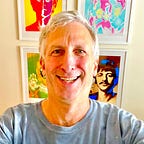THE GREATEST SONGS OF THE 1960s THAT NO ONE HAS EVER HEARD
Led Zeppelin — “That’s the Way” to Bron-Yr-Aur, But Where’s The Confounded bridge?!
Led Zeppelin — “That’s the Way”
Off the acoustic side of Led Zeppelin III comes the band’s gorgeous Pastoral Symphony written at the Bron-Yr-Aur (hill of the gold) cottage in Wales.
It features the best, most timeless lyrics (to my mind) that Robert Plant has ever written. Stephen Thomas Erlewine says that “That’s the Way” is a “shimmering song[] with graceful country flourishes.”
Denise Sullivan calls the song “one of Led Zeppelin’s most beautiful ballads (in the true tradition of the folk ballad)” and calls “Plant’s vocal . . . all old-English ballad, but delivered in his best restrained, unique hard rocker’s wail.”
Brad Tolinski says the song is delicate, yes, delicate!!!
Sullivan says it is “among the songs [Zeppelin] claim composed itself. Jimmy Page riffed fluently while Robert Plant sang along on the spot — the legend says it was as simple as that.”
What is the real story? Well, Brad Tolinski and Jimmy Page dive into the song in an interview in Guitar World:
It was Plant’s idea that he and Page might benefit from a vacation. Plant recalled a cottage in Wales that he had visited as a child with his family. Named Bron-Yr-Aur, the 18th century dwelling was situated in the Cambrian Mountains. . . . He invited Page to join him there in the spring of 1970, and the two men and their families packed up guitars and supplies and headed off . . . . The absence of electricity . . . guaranteed that any music created . . . would be acoustic in nature. : . . [T]he quiet came as a welcome relief for the musicians who had just spent months playing music at top volumes. . . . “The original plan was to just go there, hang out and really appreciate the countryside [says Page]. The only song we really finished up there was ‘That’s the Way,’ but being in the country set a tone, and it established a standard of traveling for inspiration.” Page had always intended Zeppelin “to be a marriage of blues, hard rock and acoustic music, topped with heavy choruses.” But while Led Zeppelin II was primarily a snapshot of a touring band caught in the heat of battle-ferocious and filled with testosterone- III would introduce a new sensitivity to their overall sound.
[Page says the song] was very exciting to record because it gave us a chance to work with some new acoustic textures. John Paul Jones plays the mandolin on it, and the main breaks . . . are taken up with the pedal steel. I couldn’t really play a pedal steel like a pedal steel player, but I could play it like me. . . . And right at the end . . . I played a dulcimer. . . . John Paul Jones went home, so I put the bass part on it as well! That didn’t happen often, believe me! The open tuning gave the track a lot of space, so we had a great time filling it up. And Robert’s lyrics were superb.
And Robert Hughes, excuse me, Robert Plant has this to say:
Of the writing sessions, singer Robert Plant recalls it as “a fantastic place in the middle of nowhere with no facilities at all-and it was a fantastic test of what we could do in that environment. Because by that time we’d become obsessed with change, and the great thing was that we were also able to create a pastoral side of Led Zep”.
Originally published at http://bracefortheobscure60srock.com on September 22, 2022.
